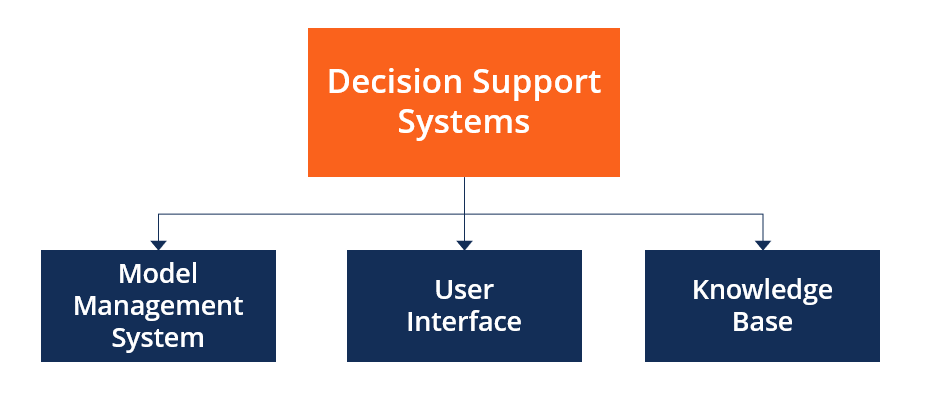Back in the 1980's and 1990's I was involved in the development of a few decision support systems for major corporations which are the backbones of AI today (2020's).
C
-----------------------
Decision support systems can be broken down into categories, each based on their primary sources of information.
- Data-driven DSS. ...
- Model-driven DSS. ...
- Communication-driven and group DSS. ...
- Knowledge-driven DSS. ...
- Document-driven DSS
What is a Decision Support System (DSS)?
A decision support system (DSS) is an information system that aids a business in decision-making activities that require judgment, determination, and a sequence of actions. The information system assists the mid- and high-level management of an organization by analyzing huge volumes of unstructured data and accumulating information that can help to solve problems and help in decision-making. A DSS is either human-powered, automated, or a combination of both.

Purpose of a Decision Support System
A decision support system produces detailed information reports by gathering and analyzing data. Hence, a DSS is different from a normal operations application, whose goal is to collect data and not analyze it.
In an organization, a DSS is used by the planning departments – such as the operations department – which collects data and creates a report that can be used by managers for decision-making. Mainly, a DSS is used in sales projection, for inventory and operations-related data, and to present information to customers in an easy-to-understand manner.
Theoretically, a DSS can be employed in various knowledge domains from an organization to forest management and the medical field. One of the main applications of a DSS in an organization is real-time reporting. It can be very helpful for organizations that take part in just-in-time (JIT) inventory management.
In a JIT inventory system, the organization requires real-time data of their inventory levels to place orders “just in time” to prevent delays in production and cause a negative domino effect. Therefore, a DSS is more tailored to the individual or organization making the decision than a traditional system.
Components of a Decision Support System
The three main components of a DSS framework are:
1. Model Management System
The model management system S=stores models that managers can use in their decision-making. The models are used in decision-making regarding the financial health of the organization and forecasting demand for a good or service.
2. User Interface
The user interface includes tools that help the end-user of a DSS to navigate through the system.
3. Knowledge Base
The knowledge base includes information from internal sources (information collected in a transaction process system) and external sources (newspapers and online databases).

Types of Decision Support Systems
- Communication-driven: Allows companies to support tasks that require more than one person to work on the task. It includes integrated tools such as Microsoft SharePoint Workspace and Google Docs.
- Model-driven: Allows access to and the management of financial, organizational, and statistical models. Data is collected, and parameters are determined using the information provided by users. The information is created into a decision-making model to analyze situations. An example of a model-driven DSS is Dicodess – an open-source model-driven DSS.
- Knowledge-driven: Provides factual and specialized solutions to situations using stored facts, procedures, rules, or interactive decision-making structures like flowcharts.
- Document-driven: Manages unstructured information in different electronic formats.
- Data-driven: Helps companies to store and analyze internal and external data.
Advantages of a Decision Support System
- A decision support system increases the speed and efficiency of decision-making activities. It is possible, as a DSS can collect and analyze real-time data.
- It promotes training within the organization, as specific skills must be developed to implement and run a DSS within an organization.
- It automates monotonous managerial processes, which means more of the manager’s time can be spent on decision-making.
- It improves interpersonal communication within the organization.
Disadvantages of a Decision Support System
- The cost to develop and implement a DSS is a huge capital investment, which makes it less accessible to smaller organizations.
- A company can develop a dependence on a DSS, as it is integrated into daily decision-making processes to improve efficiency and speed. However, managers tend to rely on the system too much, which takes away the subjectivity aspect of decision-making.
- A DSS may lead to information overload because an information system tends to consider all aspects of a problem. It creates a dilemma for end-users, as they are left with multiple choices.
- Implementation of a DSS can cause fear and backlash from lower-level employees. Many of them are not comfortable with new technology and are afraid of losing their jobs to technology.




No comments:
Post a Comment